October saw a sharp slowdown in annual house price growth, to 7.2% from 9.5% in September.
Prices fell by 0.9% month-on-month, after taking account of seasonal effects, the first such fall since July 2021 and the largest since June 2020.
The market has undoubtedly been impacted by the turmoil following the mini-Budget, which led to a sharp rise in market interest rates.
Higher borrowing costs have added to stretched housing affordability at a time when household finances are already under pressure from high inflation.
For example, the increase in mortgage rates meant that a prospective first-time buyer (FTB) earning the average wage and looking to buy a typical FTB home with a 20% deposit would see their monthly mortgage payment rise from c.34% of take-home pay to c.45%, based on an average mortgage rate of 5.5%.
This is similar to the ratio prevailing before the financial crisis.
The market looks set to slow in the coming quarters.
Inflation will remain high for some time yet and Bank Rate is likely to rise further as the Bank of England seeks to ensure demand in the economy slows to relieve domestic price pressures.
The outlook is extremely uncertain, and much will depend on how the broader economy performs, but a relatively soft landing is still possible.
Longer term borrowing costs have fallen back in recent weeks and may moderate further if investor sentiment continues to recover.
Given the weak growth outlook, labour market conditions are likely to soften, but they are starting from a robust position, with unemployment at near 50-year lows.
Moreover, household balance sheets appear in relatively good shape with significant protection from higher borrowing costs, at least for a period, with over 85% of mortgage balances on fixed interest rates.
Stretched housing affordability is also a reflection of underlying supply constraints, which should provide some support for prices, commented Robert Gardner, Nationwide’s Chief Economist.
| Headlines | Oct-22 | Sep-22 |
|---|---|---|
| Monthly Index* | 536.9 | 541.6 |
| Monthly Change* | -0.9% | 0.0% |
| Annual Change | 7.2% | 9.5% |
|
Average Price (not seasonally adjusted) |
£268,282 | £272,259 |
Energy costs update
The government’s ‘Energy Price Guarantee’ means a typical UK household will now pay an average of £2,500 a year on their energy costs until next April.
This is c.£1,000 a year below Ofgem’s previously announced price cap, that was due to take effect from 1 October and will help shield households from the soaring cost of energy on wholesale markets.
Despite this intervention, energy costs are still going to be around 80% higher than a year ago, even after taking account of the £400 energy support scheme discount.
It is important to note that the cap is on the unit price charged to consumers, rather than a maximum bill a household can be charged.
Running costs for less energy efficient properties tend to be considerably higher, leaving these households particularly vulnerable to price rises.
Average energy costs for the most energy efficient properties (those rated A-C as reported on energy performance certificates) are expected to rise to c.£1,800 per year, compared with around £1,000 a year ago, Gardener continued.
Typical bills for D-rated properties (the most common type) are set to rise to £2,600 a year.
Those in E-rated properties will be paying around £120 a month more than last winter.
However, those living in the least efficient properties (rated F-G) will see average bills rise to c.£4,500, an extra £185 a month compared with a year ago, though these properties make up a small proportion (c.2%) of the stock of housing with a mortgage.
The cost-of-living crisis is set to disproportionately affect lower income households as they spend a higher proportion of their income on essentials (food, gas and electricity).
Lower income households are also much less likely to have accumulated savings, so they will find it more difficult to cover the increase in these costs.
Further, following the recent announcement that the blanket guarantee has been scaled back to last for six months (compared with two years previously), there is additional uncertainty about what will happen thereafter if global energy prices remain high.
Jeremy Leaf, north London estate agent and a former RICS residential chairman, comments:
“These figures are interesting as they already show a sharp fall even before the shock of the mini budget hit the market.
On the ground, new buyer enquiries almost dried up as uncertainty about the future direction of mortgage repayments added to cost-of-living concerns.
Activity has slowly started to resume since as mortgage rates began to stabilise and are now starting to fall.
Buyers are negotiating hard as they strive to take advantage of good mortgage offers while prices continue to be supported by lack of stock.”
Tom Bill, head of UK residential research at Knight Frank, comments:
“Mortgage market volatility that followed the mini-Budget caused prices to fall in October and we expect downwards pressure to persist despite the steadying effect of a new government.
Demand will come under more pressure next year as a growing number of people come to the end of fixed-rate deals and mortgage offers made earlier this year when rates were lower begin to lapse.
Government stability will help underpin transactions but we are witnessing a fundamental shift in rates take place after 13 years of ultra-low borrowing costs that will lead to price declines.
Low unemployment, tight supply and well-capitalised lenders mean we should avoid the kind of double-digit falls seen during the financial crisis.”
Tomer Aboody, director of property lender MT Finance, comments:
“Given recent political uncertainty, combined with interest rate fluctuations, it is no surprise that there is a slowdown in the housing market, as buyers and sellers are unsure whether to proceed.
Rising cost of living and higher interest rates translate into less money in people’s pockets and therefore a different approach, until these higher costs become the norm.”
Mark Harris, chief executive of mortgage broker SPF Private Clients, comments:
“House prices continue to rise year-on-year but at a slower pace as higher mortgage costs, along with the rising cost of living, have an impact on affordability.
Swap rates have calmed since the furore of the fallout of the mini Budget, with two-year money easing by more than 100 basis points over the past month.
Some fixed-rate mortgage pricing has dropped accordingly over the past few days, with Barclays, HSBC and Santander, among others, reducing their rates.
With a 75 basis points base rate rise forecast later this week, borrowers will be wondering whether prices of new mortgages will edge up again.
However, while base rate may not peak at 3 per cent, rates may not need to go much higher now that Rishi Sunak has brought some stability.
Borrowers have been opting for tracker or variable mortgages over the past month, with medium and long-term fixes already falling and expected to fall further.”
Avinav Nigam, cofounder of real estate investment platform, IMMO, comments:
“The slowdown of annual house price growth in October was largely expected as higher mortgage rates start to have an impact.
Softening buyer demand is evident, with any deals that were pre-arranged being transacted now, given conveyancing generally takes time.
Furthermore, we are also starting to see property listings for sales drop by 15 to 20 per cent in some parts of the UK, suggesting the market dynamic is shifting towards a cool down in the winter months.
The heady growth of the past decade is nearing an end, with interest rates expected to hit at least 3 per cent and affordability parameters worsening, which could force buyers to dip into their home deposit savings.
Some predict house prices could correct by as much as 7 to 10 per cent, with both affordability and currency crises potentially trumped by the housing crisis.
Having said that, we don’t expect a correction in house prices to improve affordability of homes significantly, given that lenders are running affordability checks on consumers in order to satisfy 6 to 7 per cent mortgage rates, as well as the looming uncertainty which is delaying house purchase decisions.
As a consequence, consumer demand will shift even more towards renting, although quality and reasonable supply a is sorely lacking.”
CEO of Alliance Fund, Iain Crawford, comments:
“The property market is still standing firm, but we’re now seeing concrete signs that the marathon period of double-digit price hikes spurred by the pandemic are coming to an end.
While this certainly doesn’t signal that a market collapse is on the horizon, the latest mortgage approval data From the Bank of England also shows that buyer appetites eased in September.
However, it remains unclear as to whether we’re witnessing a notable reduction in buyer demand, or the temporary impact of an unsettled mortgage sector following the government’s shambolic mini-budget.
While the latter is more likely, it will be a few months yet before we know if we’re in the midst of a property sector slump, or simply a seasonal market slowdown.”
Director of Benham and Reeves, Marc von Grundherr, comments:
“Any market slowdown is likely to strike fear into the hearts of the nation’s homeowners, but a reduction in the rate of house price growth should be largely welcomed.
The monumental levels of house price appreciation seen throughout the pandemic market boom just simply aren’t sustainable and it’s far better the market steadily returns to normality, rather than crashing back down to earth with a bump.
James Forrester, Managing Director of Barrows and Forrester, comments:
“Despite the panic of recent weeks, we’re simply seeing no let up from buyers on the ground and there remains a far greater appetite for homeownership than the available housing stock to satisfy it.
While this remains the case, any fears of a property market crash can be firmly put to bed and we expect to see house prices continue to increase on an annual basis throughout the remainder of the year, albeit at a more measured pace, as has already been the case in recent months.”
Managing Director of HBB Solutions, Chris Hodgkinson, comments:
“All current signs point to a housing market running dangerously low on steam, with buyer demand starting to fade, while dangerously over-inflated house prices can no longer maintain the trajectory of the last two years.
With many buyers also being hit by increasing mortgage costs, we can expect a turbulent few months ahead, as sellers struggle to achieve their desired asking price, leading to a raft of sales falling through.”
CEO of Octane Capital, Jonathan Samuels, comments:
“We’re now starting to see the level of buyers entering the market return to pre-pandemic levels and this drop in demand will inevitably impact the level of house price growth being seen across the UK market.
At the same time, the average cost of repaying a mortgage is now at its highest in over a decade and this will also impact house prices, with prospective buyers no longer able to stretch to the same house price heights seen over the last two years.
As a result, the housing market will start to cool as we approach the end of the year, but it’s unlikely we will see a property market crash, rather a softening of the curve.”




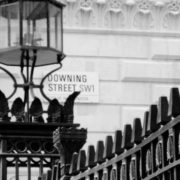
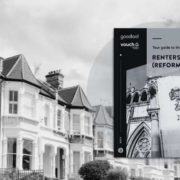


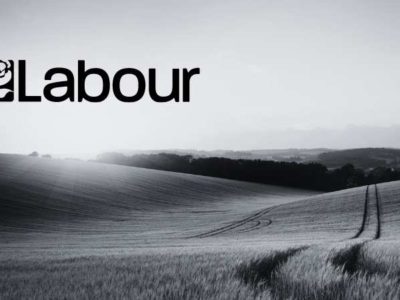

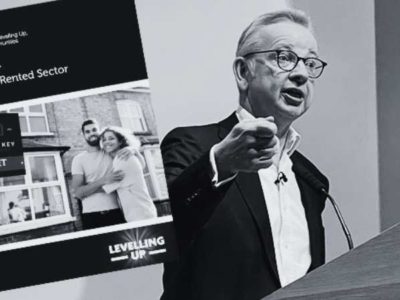



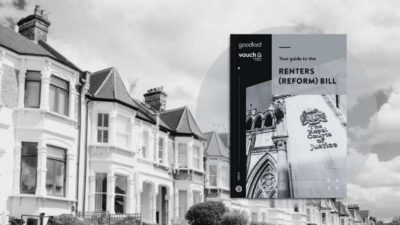






Comments